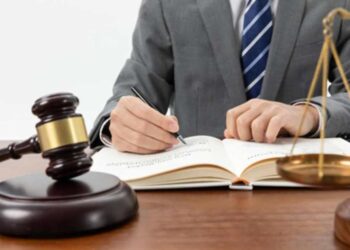Personal injury law has undergone significant changes over the years, influenced not only by legal precedents but also by societal attitudes. The evolution of this field reflects a growing recognition of individual rights and the need for compassionate justice for injured parties.
From early legal systems that offered limited recourse for personal harm to contemporary approaches that prioritize victim advocacy, the development of personal injury law illustrates the human element intertwined within legal statutes. Courts have increasingly become venues not just for adjudication, but for addressing the emotional and psychological impacts of injuries, signaling a shift towards more humane legal practices.
Historical Context of Personal Injury Law
The evolution of personal injury law reflects changing societal values, shifts in legal principles, and the growing recognition of individual rights.
Evolution from Ancient to Modern Times
Personal injury law has roots in ancient legal systems, such as the Code of Hammurabi, which allowed for compensation claims for wrongdoing. In Ancient Rome, legal doctrines emerged that distinguished between intentional harm and negligence, laying the groundwork for future laws.
The Middle Ages saw the development of the principle of “tort,” which emerged as a response to personal wrongs. This foundation became more structured in the 19th century, with the rise of Civil Law and the establishment of negligence as a concept.
The Industrial Revolution catalyzed significant changes, as increased personal injuries from workplace accidents highlighted the need for legal remedies. By the 20th century, statutes and regulations began to formalize personal injury claims, advancing victim rights and compensation mechanisms.
Impact of Common Law on Modern Personal Injury Cases
Common law traditions significantly shaped personal injury law in many jurisdictions. Originating in medieval England, common law evolved through court decisions rather than codified statute. This flexibility allowed judges to establish precedents that addressed various aspects of personal injury.
As a result, contemporary personal injury law in many countries balances common law principles with statutory provisions. This combination ensures a comprehensive approach to addressing personal injuries, enabling victims to seek redress effectively.
The Role of Personal Injury Attorneys
Personal injury attorneys serve as essential advocates for clients navigating the complexities of legal claims. They not only provide legal expertise but also foster critical relationships that help clients through challenging times. Their influence extends to various aspects, including advocacy and professional ethics.
Advocacy and the Attorney-Client Relationship
Personal injury attorneys prioritize their clients’ best interests, often acting as the primary voice in legal matters. Establishing a strong attorney-client relationship is vital. This bond allows for open communication, trust, and a better understanding of the client’s needs and goals.
In Houston, personal injury attorneys work closely with clients to gather evidence, prepare claims, and represent them in negotiations or court. They ensure clients understand their rights and options, enabling informed decisions. Such personalized advocacy can significantly impact the outcome of a case, allowing clients to secure appropriate compensation.
Ethics and Professional Responsibility
Ethics and professional responsibility form the backbone of personal injury law practice. Attorneys are bound by rules that mandate honesty, transparency, and integrity. These ethical guidelines ensure that clients receive fair representation and that legal standards are upheld.
In the context of personal injury law, attorneys must avoid conflicts of interest and uphold confidentiality. They must also provide competent representation, keeping abreast of changes in laws and best practices. Upholding these ethical standards fosters public trust in the legal system and maintains the credibility of the profession, particularly for personal injury attorneys in Houston.
Analysis of Personal Injury Laws in Houston
Houston’s personal injury laws are shaped by significant legislative developments and established legal precedents. Understanding these aspects helps clarify the landscape in which personal injury claims are navigated in the city.
Significant Legislation and Legal Precedents
Key legislation influences personal injury law in Houston, notably the Texas Civil Practice and Remedies Code. This code outlines the procedures for filing lawsuits and the types of damages that plaintiffs may pursue.
This ruling has been instrumental in shaping how similar cases are approached, emphasizing the importance of a clear link between the defendant’s actions and the injury suffered.
Legislation such as the Texas Tort Claims Act also defines the limits of liability for governmental entities, further influencing personal injury claims in Houston.
Comparative Fault System in Texas
Texas operates under a comparative fault system, which plays a critical role in personal injury cases. This system assesses the degree of fault attributable to each party involved in an accident.
In practice, if a plaintiff is found to be partially responsible for their injuries, their compensation may be reduced by their percentage of fault.
This model encourages all parties to present their case thoroughly, as the allocation of fault affects the final compensation. Understanding this system is essential for anyone pursuing a personal injury claim in Houston.
The Future of Personal Injury Law
The landscape of personal injury law is poised for significant transformation. Technological advancements and evolving legislative trends will play crucial roles in shaping the future.
Technological Advancements and Legal Practice
Technology is reshaping how personal injury claims are filed and processed. The use of artificial intelligence (AI) streamlines administrative tasks, such as document review and case analysis. This leads to faster settlements and reduced legal costs.
Telemedicine is becoming integral in injury assessments, allowing remote medical evaluations. This change increases accessibility for clients and expands the network of medical experts available for consultations.
Moreover, data analytics can identify patterns in judicial decisions, helping attorneys strategize more effectively.
Predicting Changes in Legislative Trends
Legislative changes are on the horizon as lawmakers recognize the evolving nature of personal injury claims. A trend towards stricter regulations around liability, particularly in emerging industries like autonomous vehicles, is expected.
Alternative dispute resolution (ADR) methods may gain prominence. As courts face backlogs, ADR offers efficient pathways for resolving disputes. Additionally, increasing discussions around tort reform could reshape compensation structures in personal injury cases. This may impact damage caps and the burden of proof required from plaintiffs, altering the dynamics of litigation in the future.










